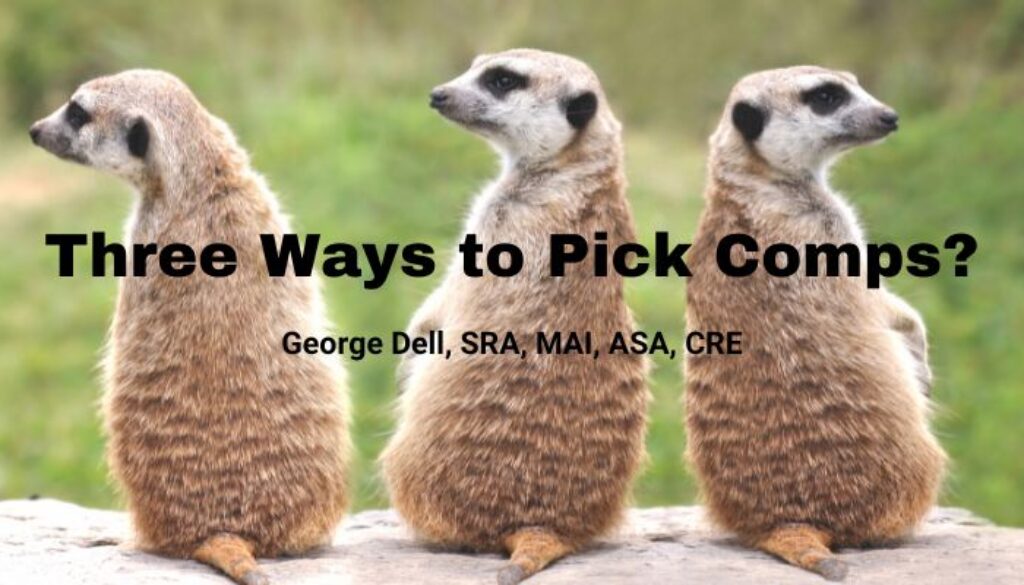There are three specific terms used to define what is a comp. It should be competitive, similar, and able to be compared.
Competitive means what a ‘typical’ buyer would consider as between the comp, and the subject, if they were available in the marketplace at the same time (the date of value). Similar means “resembling without being identical,” per my Google dictionary. “Able to be compared” is a bit fuzzy. How does a comp become able?
It seems actually to refer to my ability to compare.
And yes, I can compare. I can compare anything. My comparison can be: a) identical, b) very comparable, c) sorta comparable, or d) not at all comparable. Done! I answered the question by self-definition.
So how about similar? Let’s see. Does this one resemble that one? Very scientific . . . I will look at one, and look at another one, and judge resemblance. I can judge resemblance. Trust me. I’ve been doing this same resemblance comparison thing over and over for many years. Trust me, I’m good. I know resemblance when I see it . . .
It all seems fuzzy still. The real answer must stand up. It must be competitive! That must be the secret word! Let’s look. The definition this time is “relating to or characterized by competition.”
It appears that to judge how good a datum or comp is — depends on how competitive it is. So how do we determine how competitive is a competitive comp? No help here. It looks like this word also is defined by itself. A comp is competitive if it is competitive, and not competitive if it is not competitive.
Darn.
Again, we find another cornerstone of the appraisal building is built on sand. Darn.
If you have followed our bleatings and rantings in this Analogue Blogue, we see that the appraisal house is creaking and sinking at an angle. Our foundation is defined by definitions which are circular:
- We do not know what is a “comp.”
- We thusly know not what is the relevant market.
- We are not really sure that market price is really market value.
But … we do know this is what our peers do, and what our clients want! And that is what our standards require. Do what clients want, and do what our ‘peers’ do.
No problem. The next cycle, the next row of bank-owned properties, the next loan portfolio losses will simply be covered by a public rescue. Homes will be lost. Only this time the FHFA is at the center.
This four-part series will consider the three methods of selecting all available sales information available and necessary. The goal, per USPAP, is to be “worthy of belief.” The three methods are:
- Comparable sample selection based on good judgment and carefulness;
- Random sample selection, after identifying the correct sales population;
- Complete sample selection, where sample comprises the full population.

October 26, 2022 @ 7:51 am
Looking forward to the next installment. Thanks George.
October 26, 2022 @ 10:28 am
Wordmeister !
October 27, 2022 @ 8:54 am
Thanks for sharing your knowledge George!
December 14, 2022 @ 9:33 am
Thanks for sharing